Stunt scooter: features, rating of the best models and choices

Stunt scooter - a special type of vehicle designed for scooter sports. It differs from the usual one, well known to everyone from childhood, in the same way as a paper boat from a real sea liner: both constructively and functionally. The choice of such an acquisition is a very responsible event, it will certainly require special knowledge.

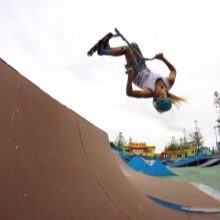

What it is?
A stunt scooter is also called a kick scooter, and sometimes a freestyle scooter.
This is a sports gadget, its purpose is to provide reliable extreme skiing in a special skate park or street spot.
And also these vehicles are used in a special kind of sport - kick scoring. They are created with the expectation of serious loads, to perform dizzying stunts. Therefore, such a projectile looks very impressive - the reinforced structural elements make an impression. The sports stunt scooter does not have a folding mechanism and steering wheel adjustment, and this is what distinguishes it from other scooters.

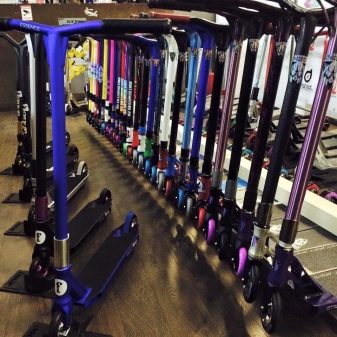
The modernized extreme version is usually presented in one of two main types. There are so-called compliments and custom. The first is a ready-made version, which is already assembled by the manufacturer and is ready for tough and harsh operation. The second option is the constructor, which allows you to assemble a scooter for yourself from individual parts to order.
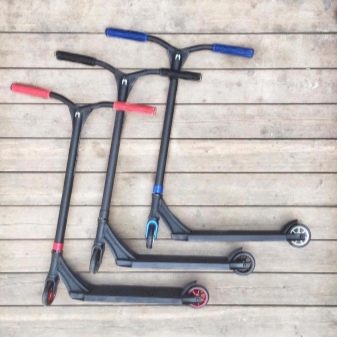
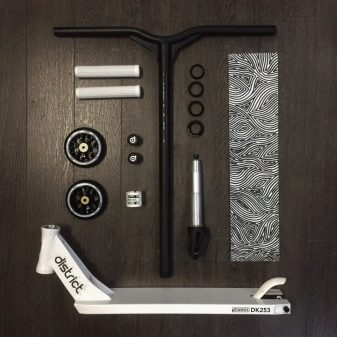
For different sports disciplines, devices that are different in purpose are used.
- Park scooter - lightweight model with small dimensions of the steering wheel and deck.On these, it is convenient to do tricks in which rotation is provided. The steering wheel of a park scooter is usually titanium or aluminum, the wheels are stiff and light.

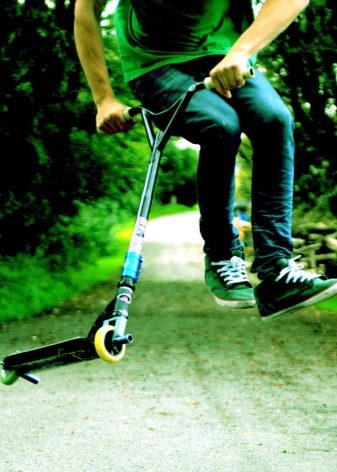
- Straight - the handlebar is taller and wider, made of steel, the bottom is flat. This makes the task easier when performing the main purpose of such scooters - easy descent along handrails and steps. These models are usually equipped with softer wheels.
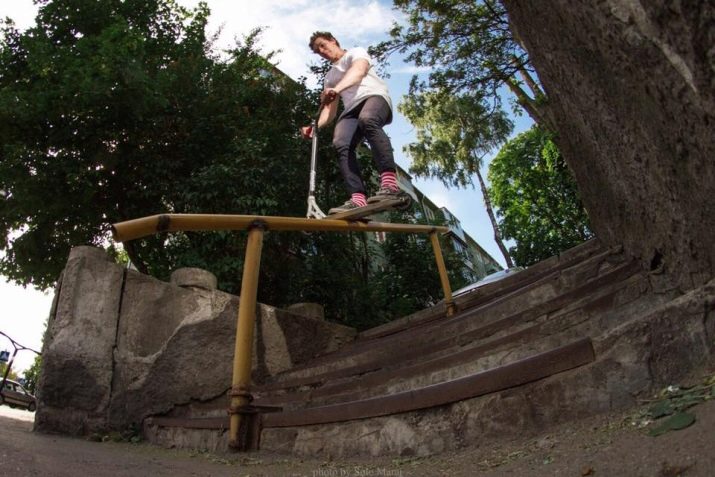
- Dirt - a serious device for extreme driving on slides and hills, in parks with trampolines. Has a large deck and enlarged inflatable wheels.
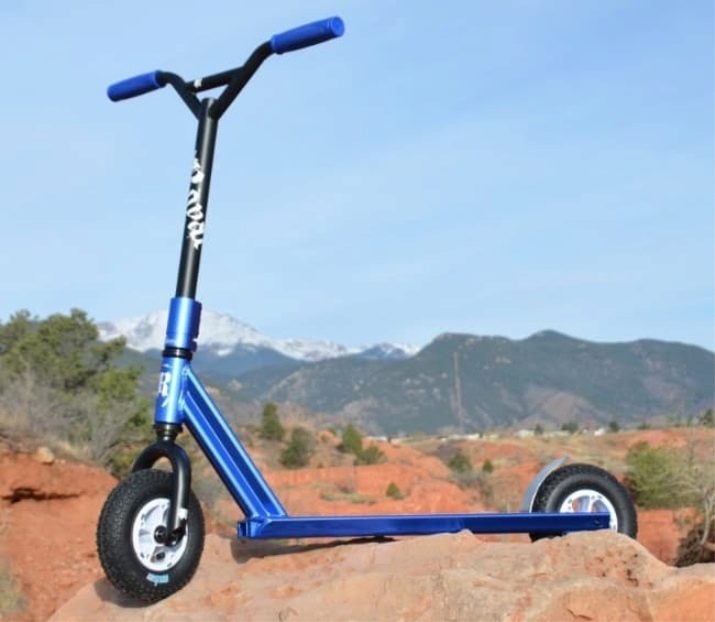
When choosing such a device, you should always take into account the intended purpose of the acquisition. On a dirt scooter it is not very convenient to spin, and street models are unlikely to be able to help do exciting tricks on the springboard.

A bit of history
It's hard to imagine, but the first fans of the scooter-tricks used the most common children's little devices. To prevent flimsy devices from breaking right during the next trick, they were independently “brought to mind”, strengthening the structure, adding certain elements. However, the scooters broke down, the riders were injured, but they did not give up their hobby.
This continued until the beginning of the new millennium, and only in 2000, fans of this extreme entertainment turned to to the specialists of the Eagle Supply company. The organization was engaged in the production of rollers for roller skis. The request was surprising, but not shocking. After thinking and conducting a series of tests with the riders themselves, the company released the first stunt scooter wheels with aluminum rims.
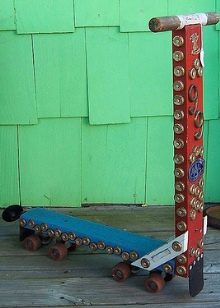
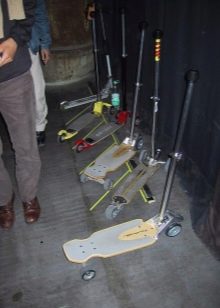
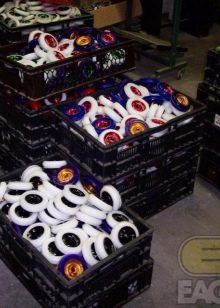
Razor and Micro responded almost simultaneously to requests for help and released scooters that couldn't be folded. And then the riders themselves put together the two components of success and began to produce separate elements - forks, decks, reinforced handlebars. This is how the world famous companies TSI, Proto, Wee appeared.
It took about a decade for successes and failures, discoveries and failures, and in 2010, companies that narrowly specialized only in vehicles for extreme lovers made themselves known - MGP, District, Blunt.
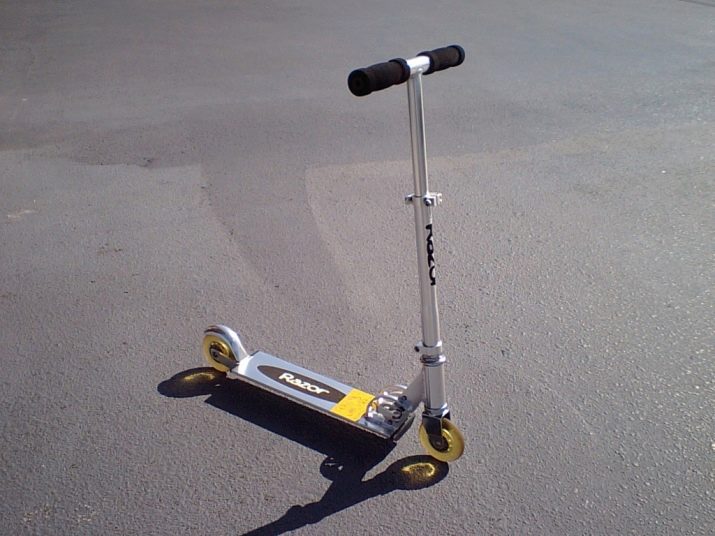
The standards were gradually changing - literally on their own mistakes, falls and injuries, the riders came to the conclusion that it is necessary to increase the diameter of the wheels, raise the steering wheel, make it wider. And since then, the search process has not stopped - almost every season the companies offer new products. Today, these scooters are produced under 50 brands for a wide variety of users - from beginners who only today decided to go out and master their first trick, to professional athletes.
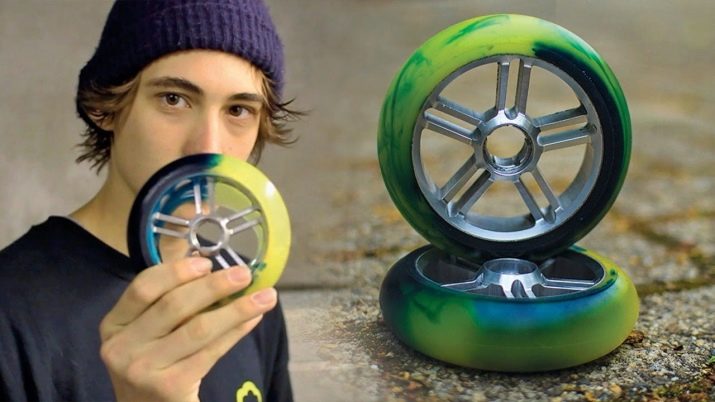
What are the details?
The stunt scooter has a well-defined design, the individual elements of which are subject to stringent standards. This also applies to materials and sizes, and therefore spare parts from one scooter may well be suitable for another, another manufacturer, if both manufacturers comply with the standards.
Let's consider what a stunt scooter is.
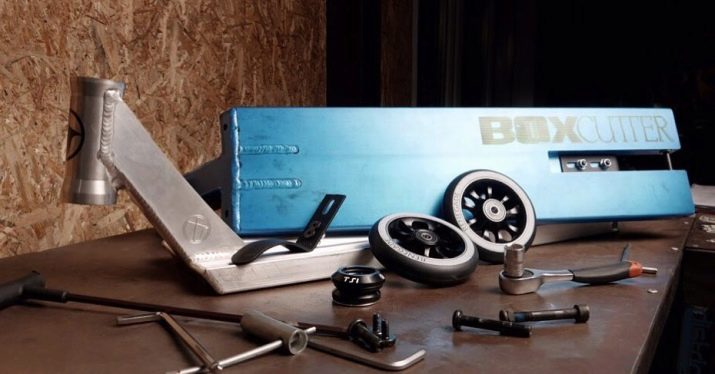
- Soundboard. A deck is a platform that is small in size, on which the skier gets up. It cannot be disassembled, it consists of a base or a profile, a stem and a glass. Usually these elements are connected to each other by welding. The exception is models with cast cups, in which the cups with the take-out are cast from one aluminum piece.
How wide the backing board will be depends on the manufacturer and model. The brake, rear wheel, steering column and compression fork are attached to the board.

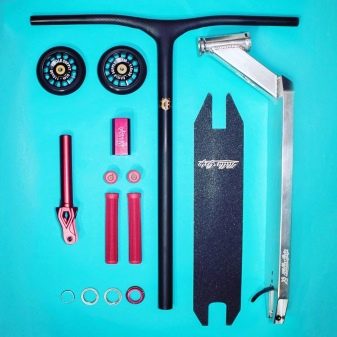
- Fork. This is an important part that holds the front wheel of the scooter. It connects to the board via the steering column and is secured with a compression system. The fork consists of two parts - the stock and the feathers.
The fork can be made of aluminum. Such components are considered the safest, lightest. Steel forks are made up of separate parts that are welded together. They are usually put on budget-class extreme scooters. And there are also combined forks, in which the stem is made of steel, and the feathers are made of aluminum.
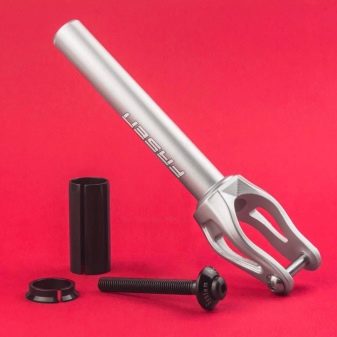
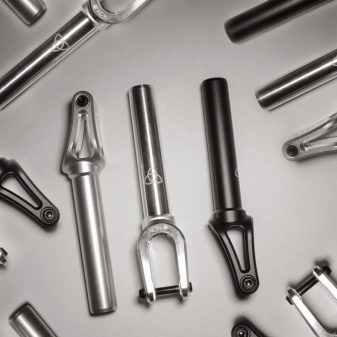
- Steering column. The steering column is needed so that the steering wheel can change its position in space relative to the deck. It is equipped with two bearings located in the top and bottom of the glass.

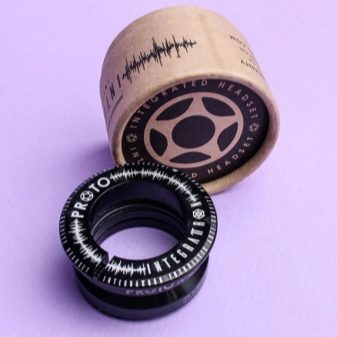
- Compression system. This is a special system that provides the compression necessary so that the fork in the glass can be locked in an upright position. There are different compression systems - threaded, SCS (standard), HIC, IHC, ICS.
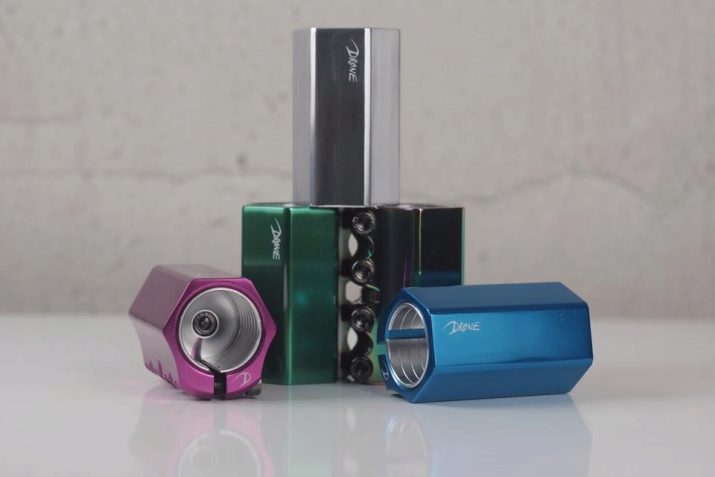
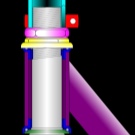

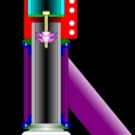
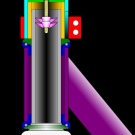

- Clamp... A small detail - a clamp, which makes it possible to fix the steering wheel relative to the front wheel.
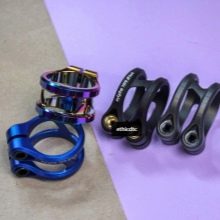

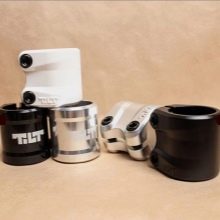
- Steering wheel... Needed to control the device. Since it cannot fold on an extreme scooter, it is simply initially selected for the height of the rider. Rudders come in different shapes: from T and Y to W - a complex shape with added stiffening wings.

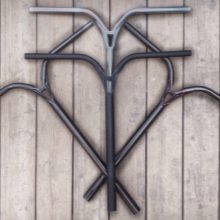
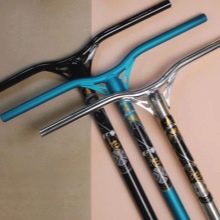
- Grips... These are rubber handles on the steering wheel. They help to hold the steering wheel even with sweaty hands, and also partially absorb the force of impact when landing from a jump.
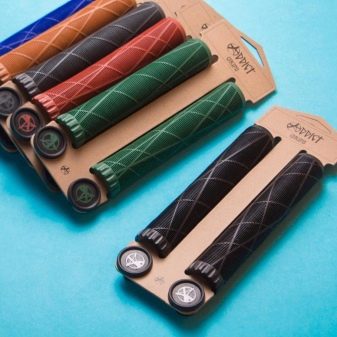
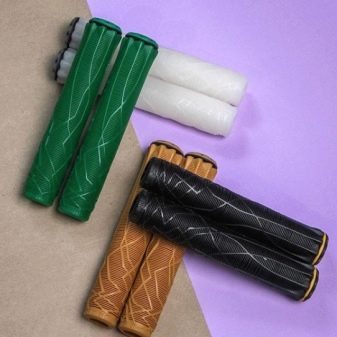
- Barends... Small plugs that cover the sides of the handlebars. They can be plastic or aluminum - this does not play a big role.

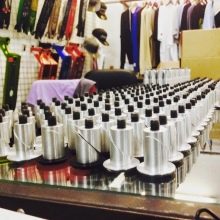

- Wheels... For extreme scooters, special wheels are made, consisting of an aluminum disc and an outer polyurethane layer. Most often, stunt scooters have wheels with a diameter of 110 mm.
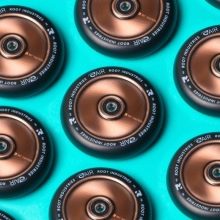
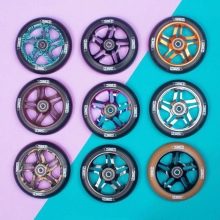
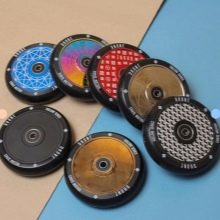
- Bearings... An important part to ensure the wheels are spinning with minimal friction. This type of scooter is usually fitted with ABEC 5/7/9 bearings.

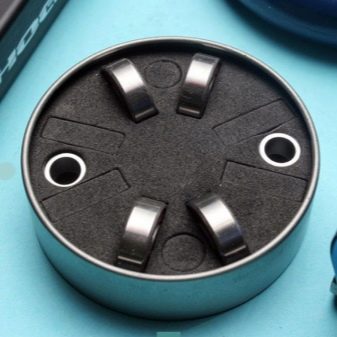
- Skin... Hard rough sandpaper on self-adhesive. This part allows for a more secure contact of the shoe sole with the plank.

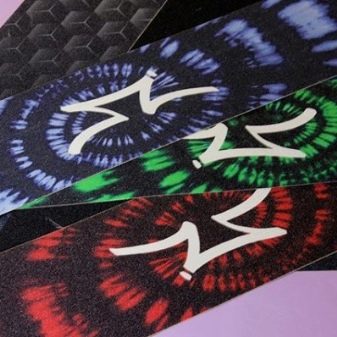
- Pegs... Cylinders that are on the same line with the wheels on a certain side or on both sides. You need them, as you might guess, in order to do tricks - slide, do racks. They can be steel, aluminum or plastic.
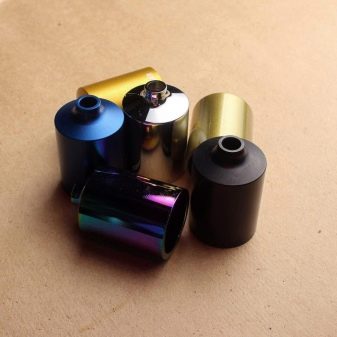

- Brake... Located at the back, activated by pressing the foot. Sometimes, instead of a brake, there is a special retainer. — footfender.

Typically, an extreme scooter weighs between 3 and 5.5 kg. The lower this indicator, the more nimble and maneuverable the scooter will be, but heavier devices have their own advantage - they are more reliable and strong.
An accessory may be attached to the purchase - a carrying bag.


Differences from conventional scooters
Beginners often ask the question of how a sports scooter differs from a regular one. And the most truthful answer to it is for almost everyone. Extreme modifications, like ordinary children's scooters, are set in motion by pushing one foot off the ground. But if a regular scooter has a folding mechanism to make it comfortable to carry, adjustable handlebar height and a wide deck, then all this is completely unusual for a sports version.
The folding steering mechanism is, of course, a useful thing, but when performing a trick it can play a cruel joke - fold down with a tangible effort on the steering wheel from the side of the rolling rider.
When jumping, turning, the support on the steering wheel is serious and the absence of a folding mechanism is a necessity, a guarantee that the device does not fold and does not fall apart.
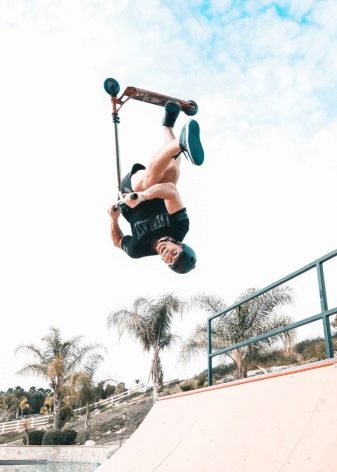
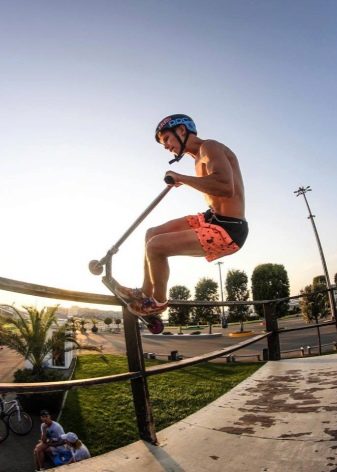
The wheels of a regular scooter are slightly larger than the wheels of a sports scooter.... The extreme version does not provide for long walks on it, but involves tricks, and therefore the wheels are made lightweight, but durable.
The main difference is the reinforced construction.
For a conventional rolling device, plastic and aluminum of not the highest technical characteristics are used. Sports models are always made of high quality aluminum, individual elements are made of high quality steel.
For ordinary models, grips can be decorative, sliding; for a high-quality sports scooter, they should never slip in the hand - the safety of the rider directly depends on this. Bearings on extreme models are put only in the highest class.
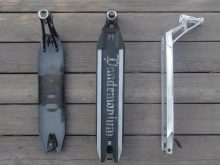
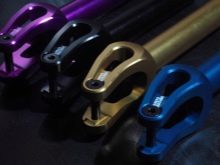
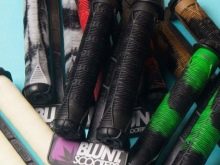
Important criteria
If you are faced with the task of choosing an excellent racing or stunt sports scooter, you should carefully read the characteristics that should be inherent in it.
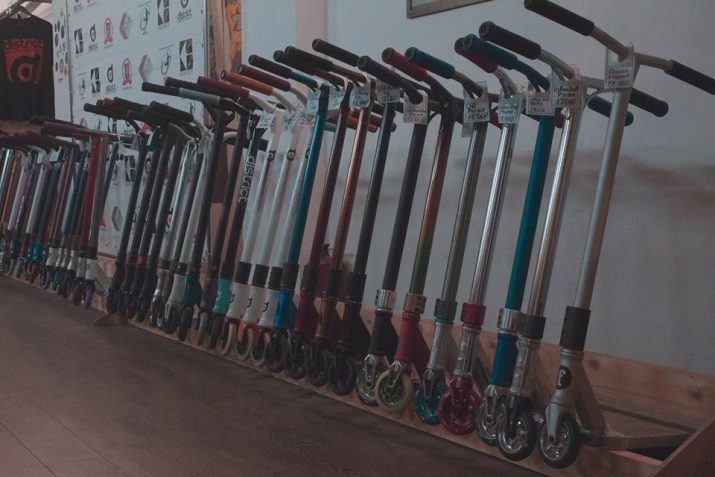
The weight
This indicator is decisive for many. If your chosen sports equipment is too light, it will be difficult to get overclocking on it at the right moment, as a result, the trick will not work or will be performed incorrectly. If the device is heavy, then this will certainly affect his maneuvering qualities.
Most sports scooters weigh between 3 and 5 kilograms, with an average of 4 kilograms. For those who prefer street riding, lightweight versions weighing 3-3.5 kilograms are more suitable. For jumps, it is better to use heavier models weighing about 4 kilograms. They are more stable in the air.
It is recommended for beginners to choose models of light weight. This will make it easier to master the first tricks and techniques.

Frame
The frame must not be equipped with a folding mechanism. Take an interest in the material and design of the frame, it should be as laconic as possible: the fewer welded parts and elements in it, the more reliable the structure will be. An aluminum or combined frame is considered optimal.

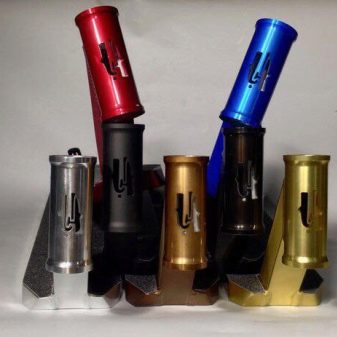
Wheel diameter and stiffness
Small wheels provide great maneuverability. But beginners are advised to choose wheels that are not too small, since the learning process on them will not be the easiest and most enjoyable. For beginners, a diameter of 110-126 millimeters is recommended. Experienced riders tend to choose 100mm wheels.
The stiffness is indicated on the side of the wheels, usually 88-90A. It is this stiffness that is standardized by most manufacturers.
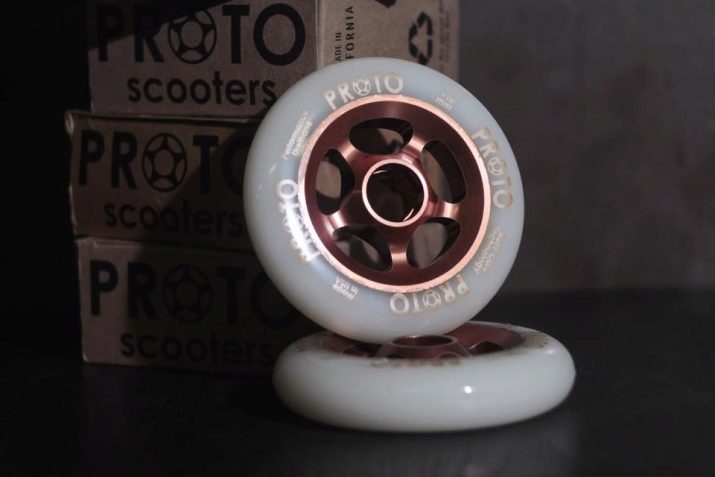
Bearings
They are usually standard for sports models, designated by the letters ABEC and three numbers. The best ones are ABEC 5-7-9. remember, that you will not save much on bearings, but you can go broke on replacing them - they have to be changed along with the wheels, and therefore it is better to initially choose high-class bearings.
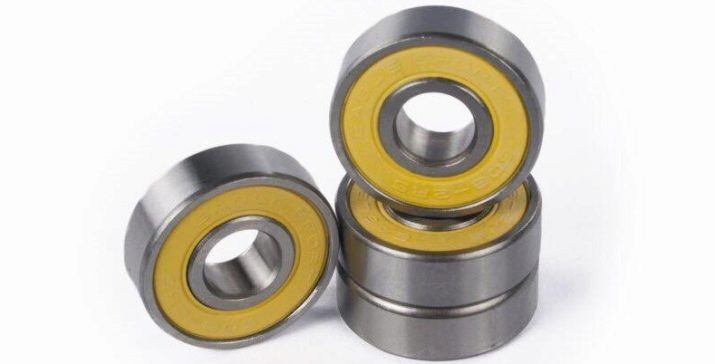
Wheel rim material
In-wheel rims can be equipped with plastic knitting needles or metal core. The more hard the drive is, the more speed you can reach. Solid aluminum are considered the toughest. Wheels with plastic spokes wear out quickly. But for beginners, this option is quite acceptable.
For those who want to jump more, softer options are suitable, and for high-speed sliding, hard ones are better suited. If the skier has a solid body weight, you should immediately give preference to hard metal discs.
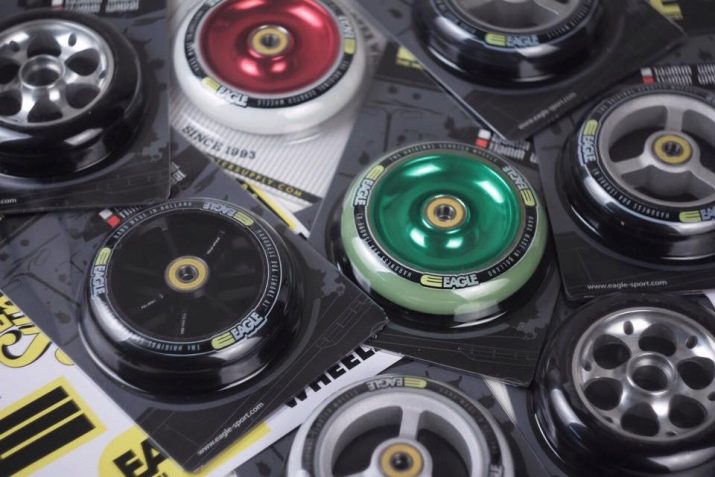
Brakes
There can be two brakes (back and front) or one back. The presence of a brake is a matter of taste and purpose of the model. Some athletes remove the brake and replace it with a footfender.
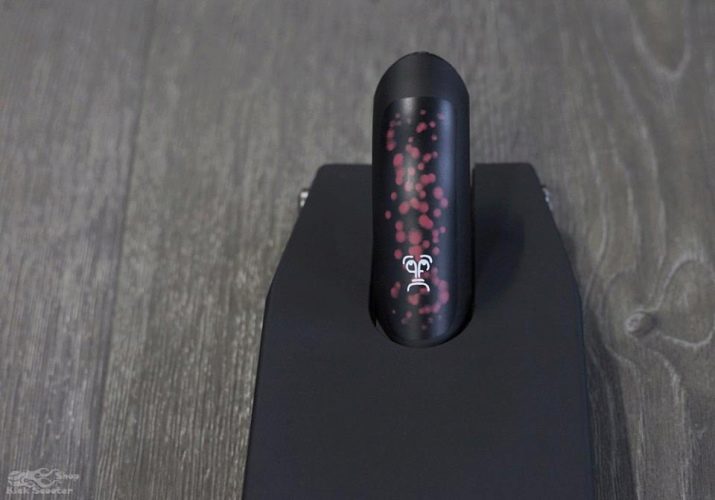
Clamps
There are 2-, 3- and 4-bolt. Safety and strength depend on the number of bolts - the more bolts, the less risks.
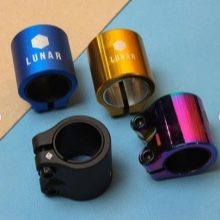
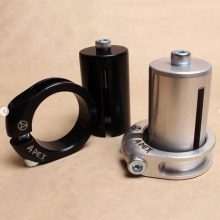
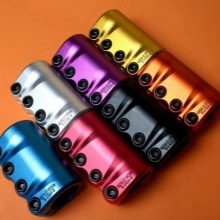
Soundboard
What the deck should be is determined by what size of shoe the skater wears. The larger the shoe size, the wider the deck should be. In many ways, the width of the deck is a matter of taste.
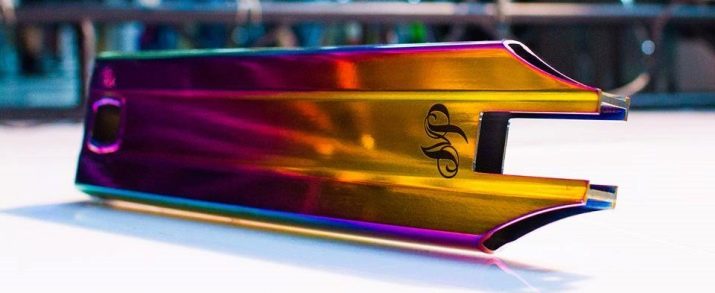
Compression systems
The most inexpensive is thread compression. It is she who is usually present in models for beginners. This is most often found on open bearings. SCS compression is heavy, but reliable, and therefore expensive in cost. The clamp in it holds both the steering wheel and the fork at the same time.
KS (ICS) - lightweight and fairly affordable compression system, The clamp holds the steering wheel and supports the compression itself. HIC (IHC) is a high reliability hybrid system.
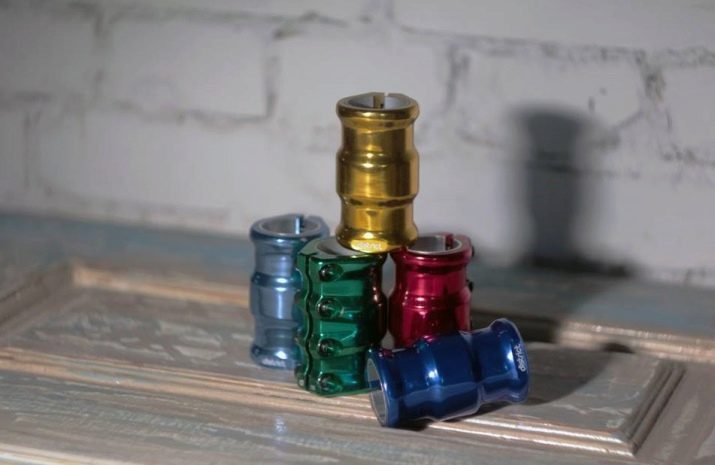
Handlebar shape and height
The steering wheel for extreme models can be different. There is a steering wheel that resembles the letter T, there is a Y-shaped and Bat-Wing. The simplest T-shaped is inexpensive, uncomplicated and safe. If it is made of high-quality material, then it also does not burden the structure with excess weight.A Y-shaped handlebar is more durable and distributes the load more evenly. The strongest and most reliable form is the Bat-Wing.
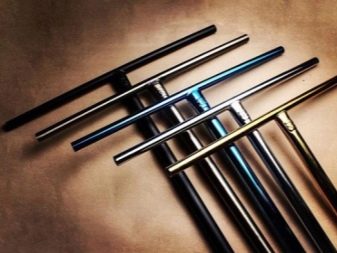

Handlebar height is a very individual criterion. The lower it is, the easier high jumps will be given, however, a high handlebar removes excess load from the back, but, alas, it does not guarantee stability in the jump. The standard is the location of the steering wheel in the area of the rider's waist or slightly below it.



The width of the handlebars should be in proportion to the width of the athlete's shoulders. Most often, the height of the handlebar is determined by the height and riding style:
- 41 - 121-122 cm;
- 43 - 129-132 cm;
- 46 - 135-137 cm;
- 48 - 145 cm;
- 51 - 151-152 cm;
- 55 - 159-160 cm;
- 58 - 168 cm;
- 61 - 173-175 cm;
- 64 - 183 cm.
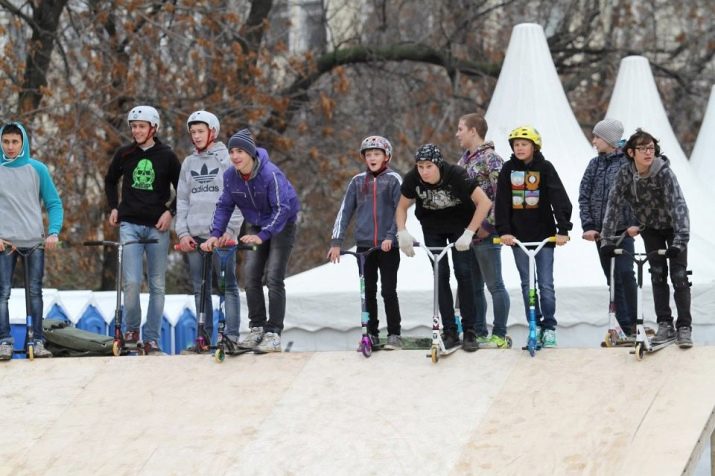
Rating
The best manufacturers of sports stunt scooters are Limit, Hipe, Playshion, Dominator, Oxelo, Tech Team Duke, Rush Action. The most expensive option in the world is Phoenix Sequel Scooter.
We have compiled the top of the best models, based on customer reviews and sports forums - both beginners and professionals.

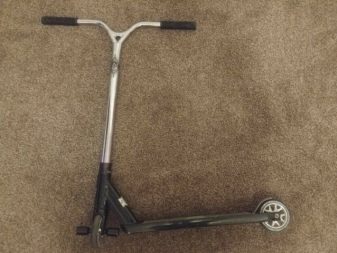
Razor Grom Sport
Great for beginners. It has a low weight, small wheels with decent cross-country ability. The deck is made of durable aircraft grade aluminum. The main disadvantage is considered to be the backlash of the steering wheel if there is no clamp on the scooter.
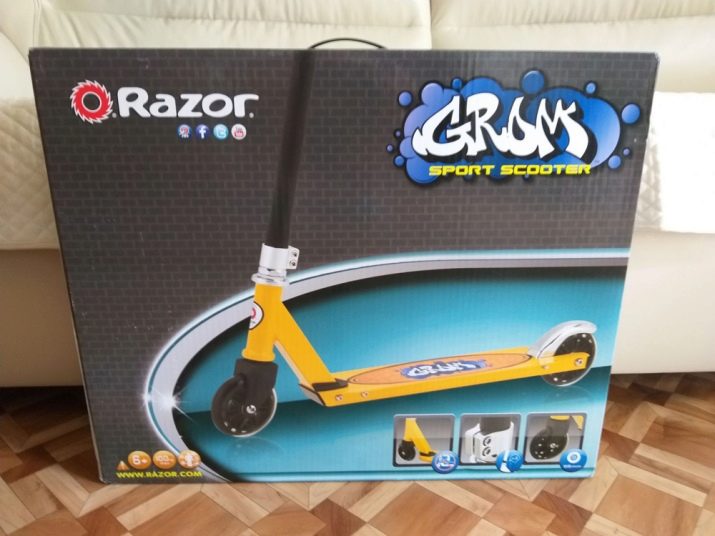
Tech Team Backflip
A good and not the most expensive option for older teens and adults. The combined deck material is advantageously complemented by innovative bearings that do not require additional adjustment. The construction is very robust. Stylish design.
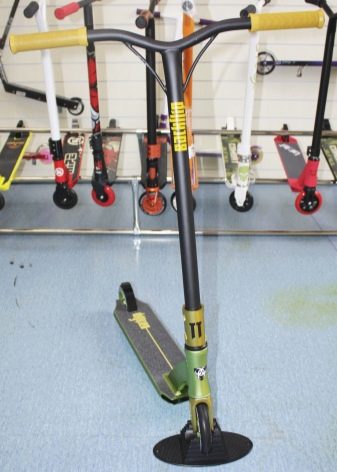
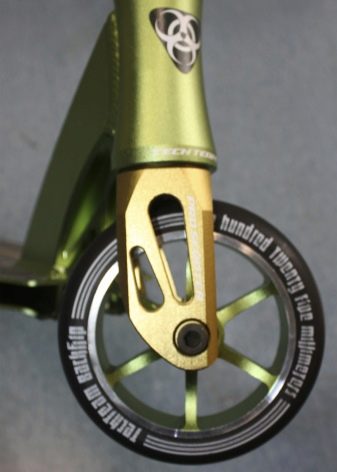
Oxelo Stunt Freestyle MF 3.6 V5
Model for athletes, has a reliable foot brake. A device with a solid deck, you can do even very difficult jumps on it without fear that the frame will break. The front and rear wheels are equipped with aluminum pegs. A minus in the model is usually found by beginners - the steering wheel is not too adapted for beginners, it is easier to handle it for already experienced athletes.
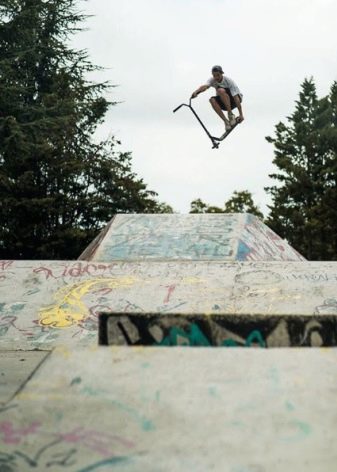

Micro Freestyle Scooter MX Trixx
Ideal for stunt drivers, connoisseurs of aggressive scooter driving. Has a light weight, shortened handle. The steering wheel is reinforced. Suitable for teenagers and adults.
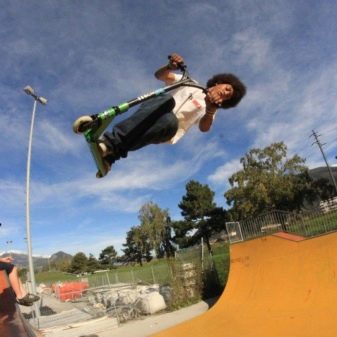
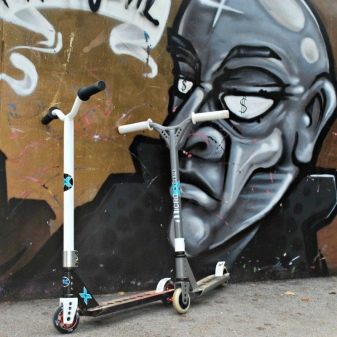
Tech Team TT Duke 101
The model is designed for children and adolescents who have yet to start mastering their first tricks. Has a reliable brake, grips are reinforced with blockers. The minus is plastic discs, and therefore you still have to change the wheels.
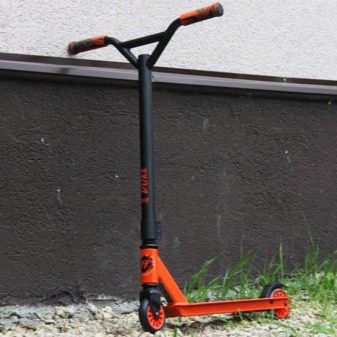

District C-Series C050
A great model for beginners and hobbyists. A company that is already legendary in the world of sports scooters, doesn't bet on fashion - you are unlikely to be offered red, green or other models, but it will be quality materials and a guarantee of safety.

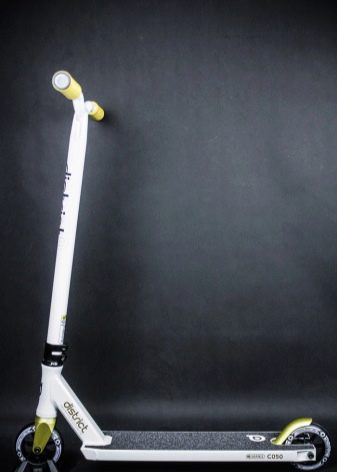
Ateox Combat
A fairly wide deck allows you to stand on it with two feet at once. Wide handlebars help beginners learn tricks... The model can also be used as a tool for city riding.
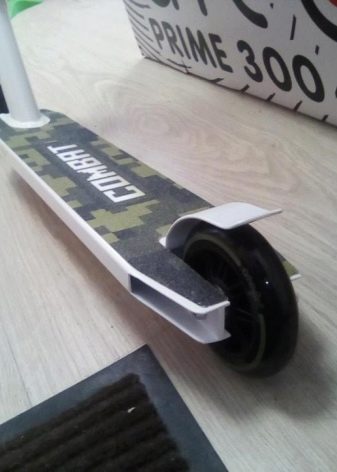

Hipe l20
A great option for tall people. The disadvantages include only the high cost - from 15 thousand rubles. It has an interesting and slightly daring design that teenagers will certainly appreciate.
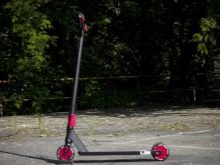


Limit LMT 01 Stunt Scooter
Equipped with excellent bearings that allow you to do complex and beautiful tricks. This is facilitated by the solid-alloy frame and polyurethane wheels. Can be used by both beginners and experienced riders.
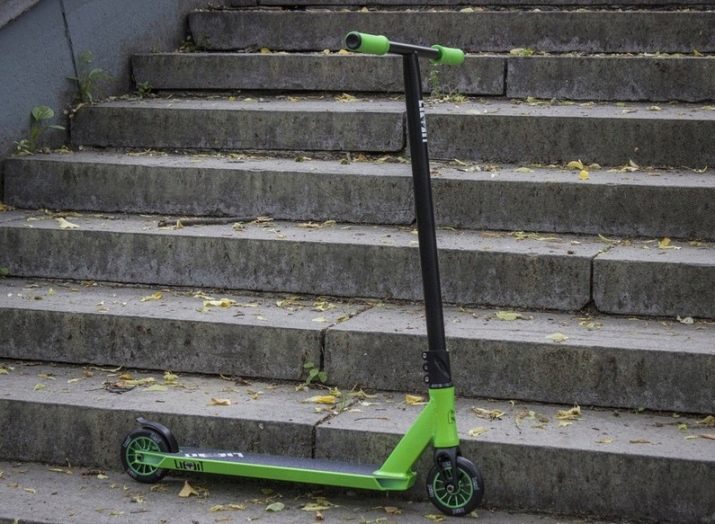
Explore pescara
The optimal model for those who have already mastered the basics and are on the way to improve them. Intermediate riders will feel confident and cool on such a scooter. Lightweight and durable frame, small wheels, HIC compression system - all this guarantees safety and ease of riding.
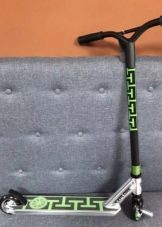
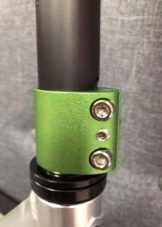
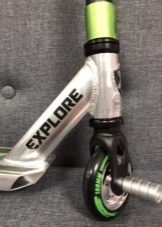

How to choose?
Choosing a freestyle scooter is not an easy task.
If you make the wrong choice, the tricks will not work or will be performed incorrectly, and if you save on everything, you can purchase a device on which a person will be injured.
Choosing a vehicle for yourself correctly means taking into account the riding style, the presence of experience or lack of it, check with the above requirements for height, age, and decide where the person will ride.

A beginner adult or teenager is equally well suited for a street model and a park model. The main thing is that the height of the handlebars should correspond to the height, the frame was made of aluminum or its combination with steel, and the wheels were quite soft.
A scooter for a professional is chosen individually because the athlete simply does not ask such a question. He perfectly knows his style, manner, weak points and will choose a model with this in mind. Generally speaking, for professional tricks, aluminum discs, a metal deck, a strong clamp and as many bolts as possible are more suitable for greater reliability.
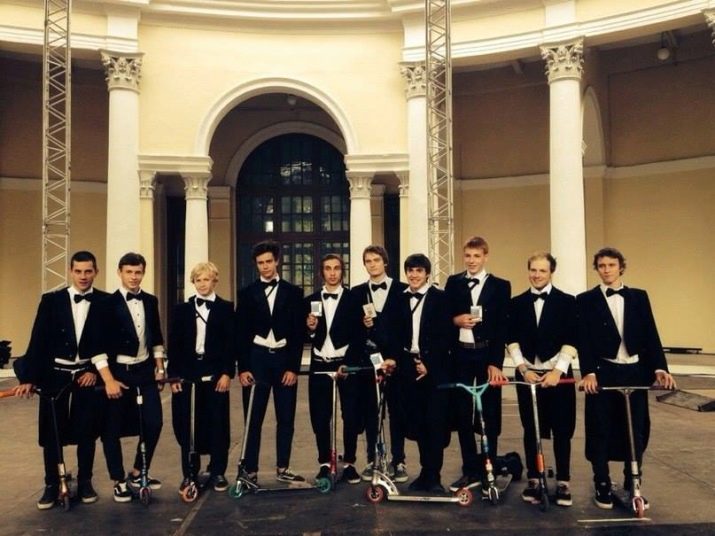
If you are choosing a gift for a child, then you should pay attention to children's models - for freestyle boys and girls are offered a fairly large selection.
Lightweight classic models are suitable for boys over 5-7 years old. For children who are already participating in professional competitions, the selection rules and requirements for scooters are usually the same as those of professionals.
Whoever buys a scooter should remember about protection. This is especially important if the purchase is planned for children. Even an experienced rider will benefit from a helmet and knee pads, they are not neglected even by world-class champions, so you shouldn't risk it.

Setup and operation
Manufacturers' assurances of the reliability and safety of their products should not be taken too personally.
A stunt scooter can quickly break down, even if it is expensive and classy, if it is incorrectly set up and ridden the wrong way.
To make the purchase last longer, experts recommend that you approach the scooter setup correctly.
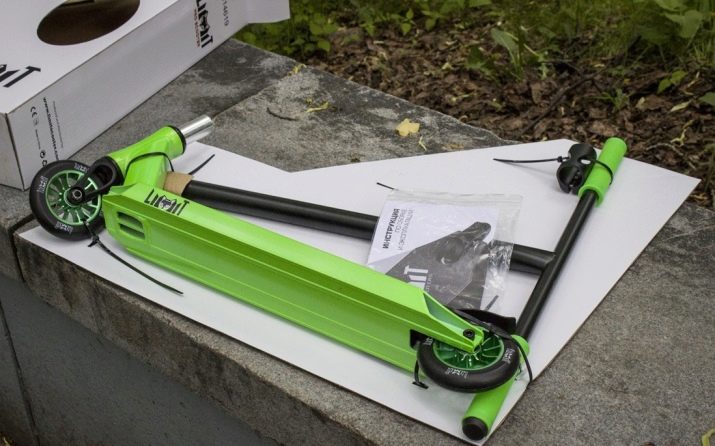
Compression
If it is loosely tightened, then there will be a backlash of the steering wheel, and this will completely deprive the process of any safety and comfort. If you overtighten it, the steering will quickly break. Experts advise to pull the bolts until the fork scrolls smoothly. Threaded compression is the easiest to adjust, but requires a gas wrench.
To set up the SCS, you will need a 5mm or 6mm Allen key. After removing the steering wheel, you need to tighten the compression bolt, then return the steering wheel to its place. Almost the same, but slightly easier to adjust, is the HIC system.
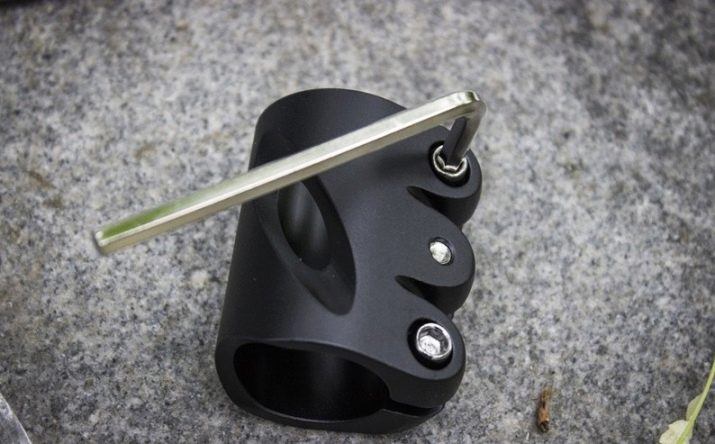
Wheel play
If there is wheel play, the axle must be tightened. This process requires an Allen key and a 13mm wrench. You need to know when to stop, because if you overtighten the bolt, you can increase the load on the bearings, and this will lead to their premature wear.
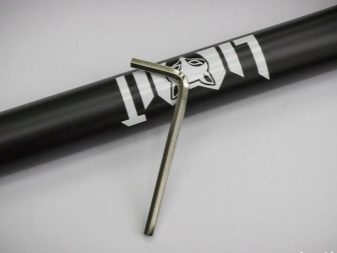
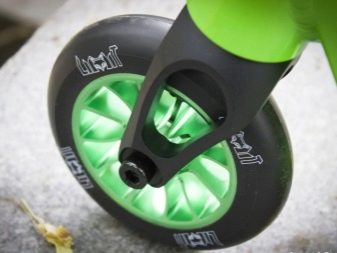
Clamp adjustment
It should fix the steering wheel as securely as possible, but it should not be overtightened either. The bolts need to be tightened just a couple of turns on both sides so that the load is evenly distributed.
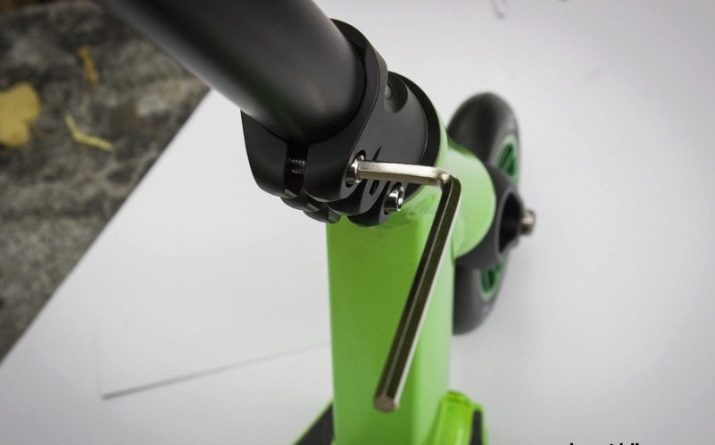
In order not to break the scooter, you should adhere to simple rules, which are most often violated by beginners. There is no need to try big tricks without knowing how to do them, especially for drops and bras. This can lead to increased stress on the glass and clamp.
Experienced extreme skiers know very well that you shouldn't ride in wet weather and rain - the risk of falls, injuries and equipment breakdowns increases.
Also, the scooter cannot be hit against obstacles or thrown. As robust as it is, such handling will not contribute to long and happy use.
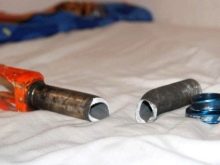
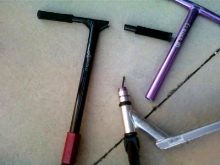
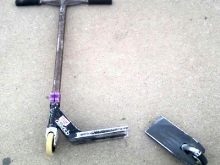
Security
It is difficult to call transport safe, especially when you consider that very risky stunts are performed on it. But it is possible to reduce injuries. To do this, you should have and certainly wear protection. And this requirement applies equally to professionals and beginners.
Before training and skating, you need to warm up well. If the muscles are warm and ready, the likelihood of injury, even if you fall, is significantly reduced.
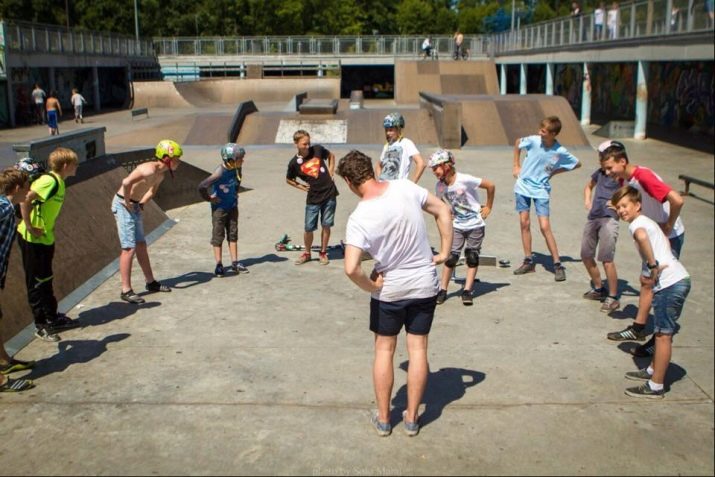
Traumatologists know for sure that the greatest number of injuries in professional riders usually occurs at the beginning of training and competition, if an athlete starts a program with insufficient muscle preparation for the load. You need to move on to more complex tricks after mastering the previous ones. You should not jump over a step trying to prove that "I can do that too." Everything has its time.
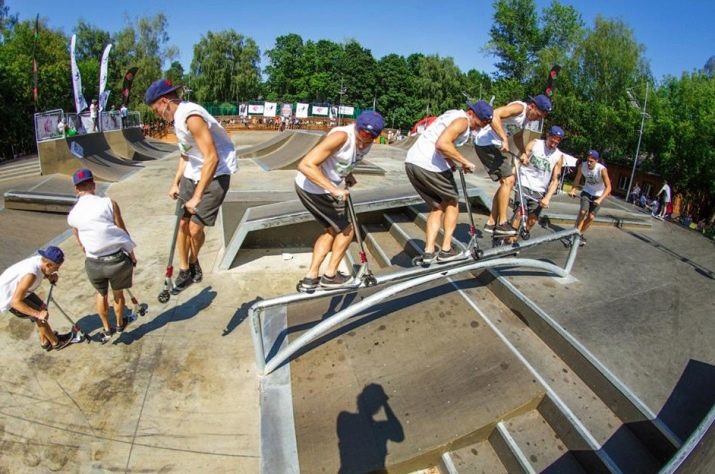
Wet roads and puddles are dangerous. Even the most expensive wheels cannot work properly in high humidity. The main hazard is when cornering on wet surfaces. Falls cannot be avoided in most cases.
A stunt scooter does not like cold weather. Wheels in such weather adhere worse to the road, and falls and breakdowns are possible.

Connoisseurs of street skating should be extremely careful on city streets, where the asphalt is not everywhere and not always as smooth as they would like. In addition, the streets are full of children, pedestrians, drivers and crazy stunts on the road with dangerous consequences for everyone. You need to carefully inspect the place where you plan to do the tricks, because even one small stone at the landing site can darken the whole trick and lead to undesirable consequences.

Riding styles
If you have a stunt scooter, then a calm walk in the park in a straight line becomes boring. Therefore, sooner or later you have to choose your own style. Freestyle is constantly changing, new tricks appear, everything is in motion, but you have to start with basic skills.
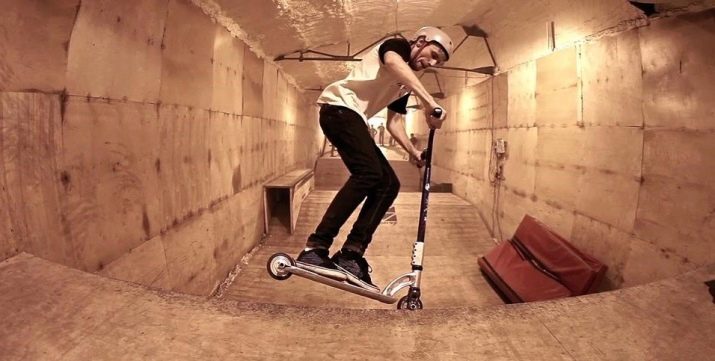
In addition to the fact that there is street skiing, park and trampoline, experts identify several styles that can be used by riders.
- Carving - sequential turns, sometimes sharp, the style is often used in alpine skiing. Skiers creating a wave out of the snow look incredibly impressive. It is impossible to say the same about the riders - they usually get a wave of sand and small stones from under the scooter, which is not so pleasant for the audience. However, the style is still beautiful, and therefore is very popular among young people.
- Drift - cornering at high speed.

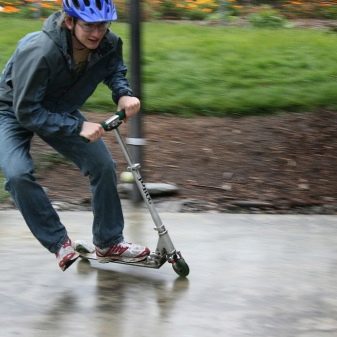
If the park style implies a large number of jumps and turns, then the street style will offer the rider more adrenaline entertainment - stairs, steps.
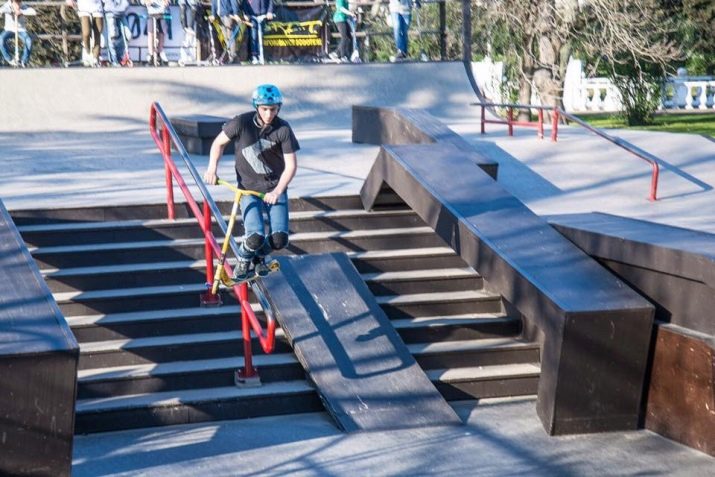
Care and maintenance
Once you decide to become a rider, you should first of all learn that without knowing the structure of your two-wheeled horse, nothing will work. The more aggressively the scooter is used, the higher the wear of the parts, and sooner or later, they will need to be replaced. This is where understanding where and what the scooter is located comes in handy. You need to treat the device for extreme skiing with care and attention. It must remain clean.
Dust and dirt can adversely affect steering and wheel performance. The most dangerous dirt for bearings, its accumulation can lead to their complete failure.
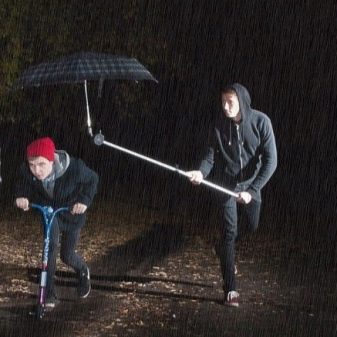
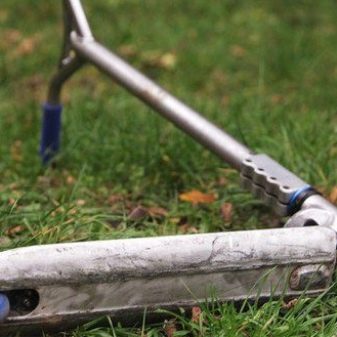
In this case, you will need to disassemble the scooter and rinse it, excluding the ingress of moisture into the anthers and bearings. All parts must be wiped with a dry cloth. Bearings can be cleaned with kerosene, after which they certainly need lubrication, otherwise rolling after washing may be the last for the bearings. Special lubrication is required. For steering - on a graphite base, for bearings - lithol or thick silicone greases.
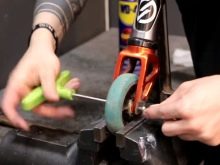

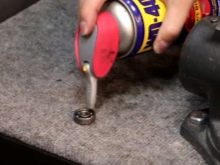
Review overview
There are quite a few reviews on the Internet about various models of stunt scooters. The owners are happy to share with everyone who wants to know what advantages their vehicles have and what disadvantages they have.
For the most part, both beginners and intermediate riders try to listen to the advice of the "experienced", and therefore often do not calculate their strength - either the scooter quickly breaks down or turns out to be difficult to operate. But if you wish, it is quite possible to make an informed and reasonable choice. Just define a list of the most attractive models for you, suitable for the price, and with it go to a specialized store, where consultants will help you figure out the details.If you have a friend who enjoys extreme skiing, take him with you - a rider with even average experience will help you choose the optimal model for a child, a beginner.
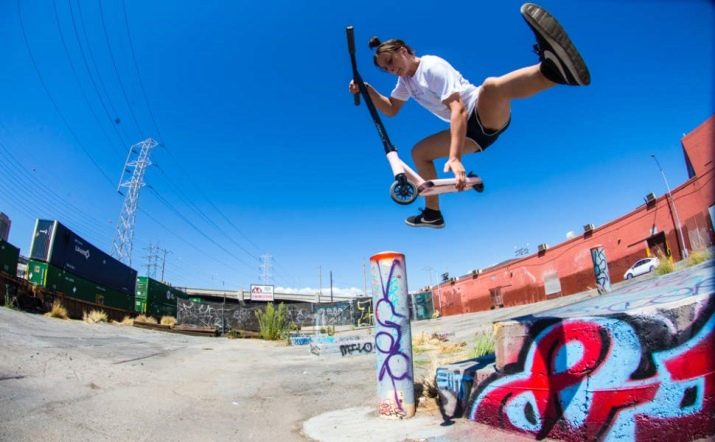
The following video will tell you how to choose a stunt scooter.








